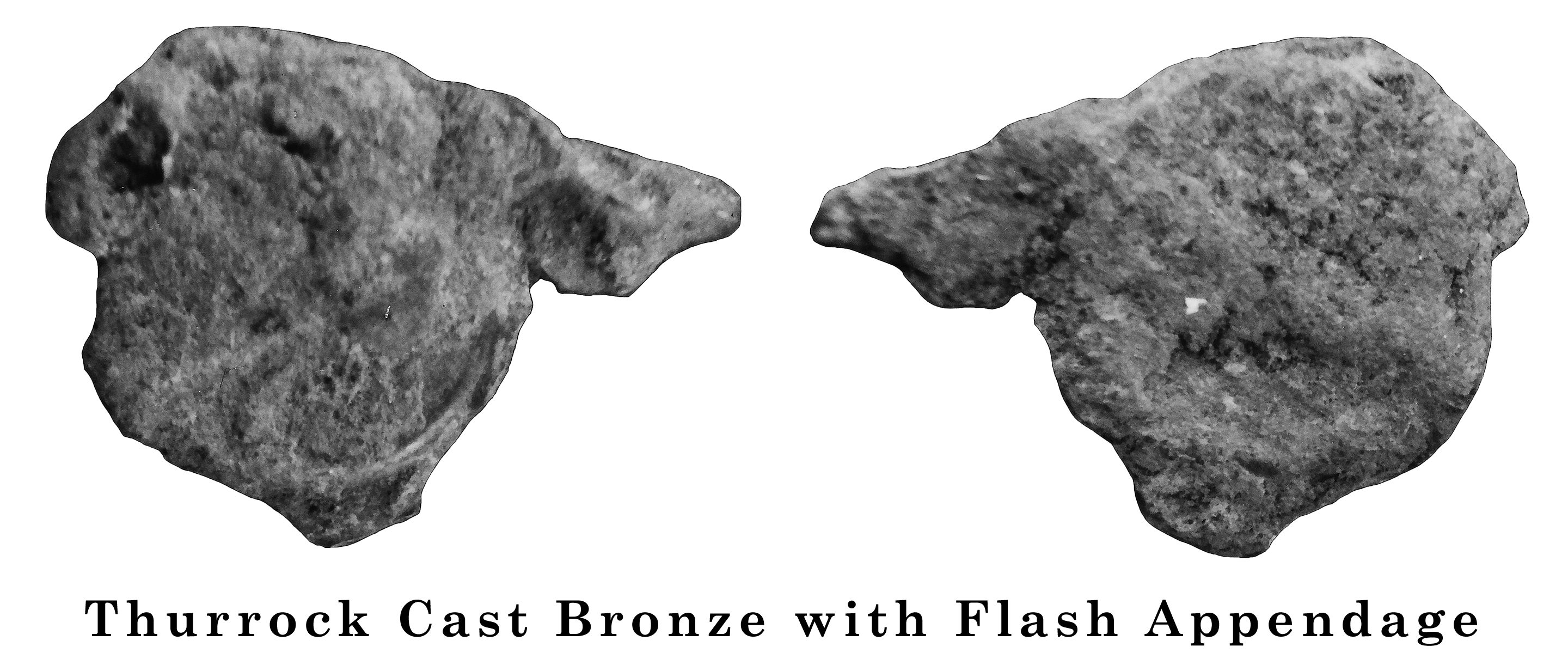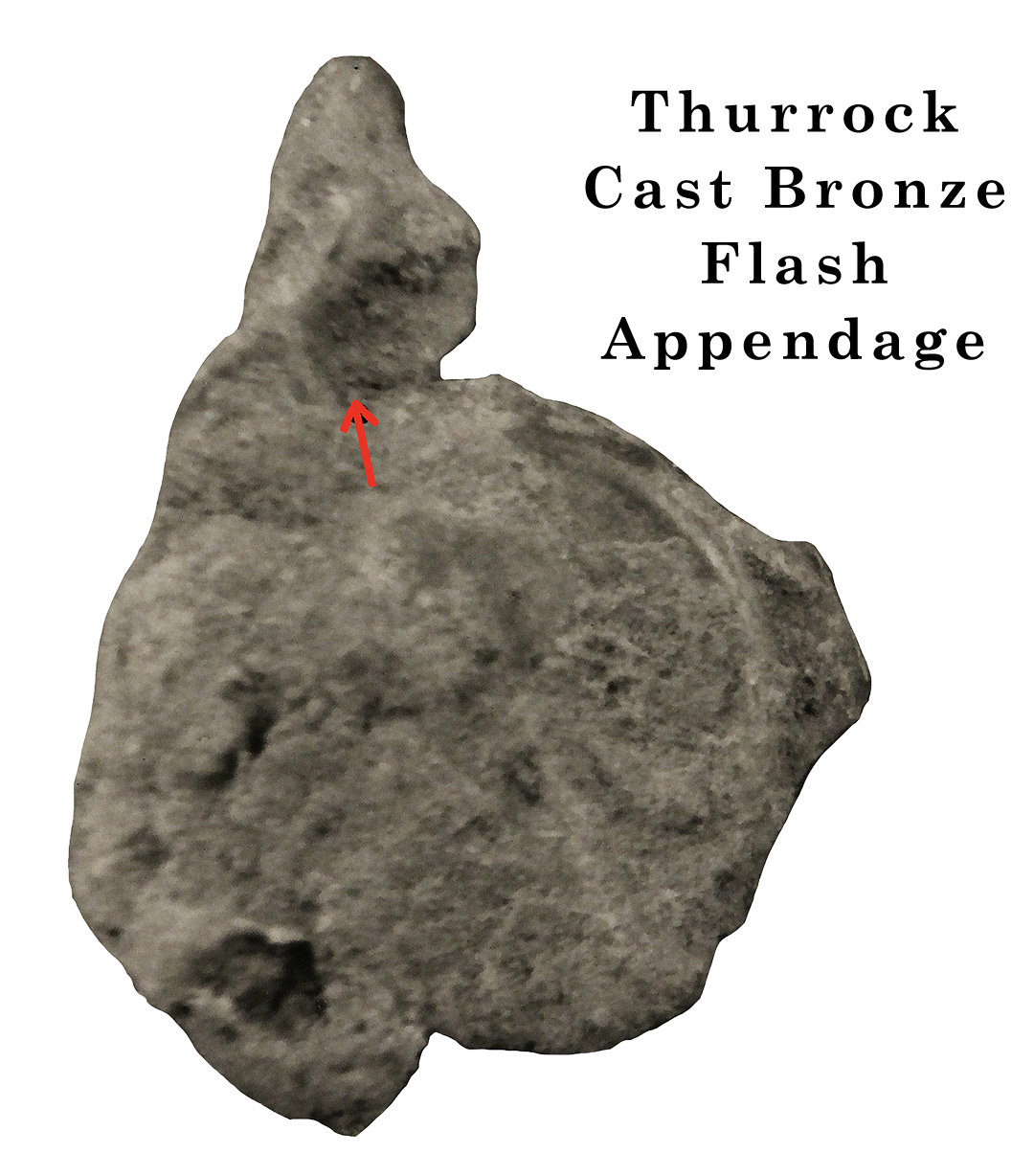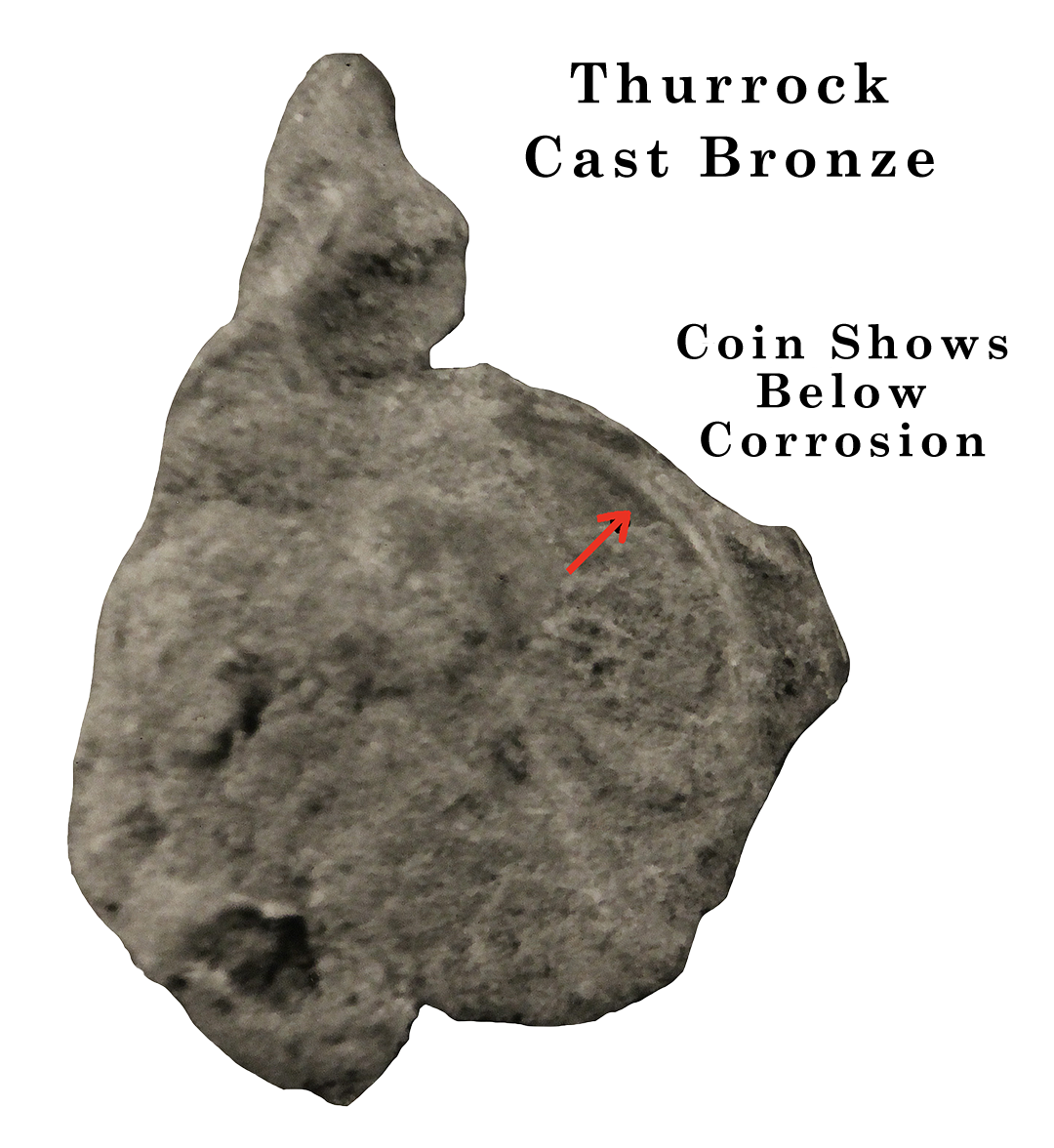
Numismatic Articles
Van Arsdell 2023b (Info)
Thurrock Cast Bronze with Flash Appendage
By Robert D. Van Arsdell
Introduction
On 2 Novemeber 1987, I visited the Thurrock Local History Museum in Grays, Essex to see and photograph some new coins recently discovered in a hoard. The results of the visit were published in the 1989 edition of Celtic Coinage of Britain and appear in Plate 59 on this website. (See Catalogue Listing)
There was one coin which has never been published to my knowledge. The coin (shown above) was included in the hoard and presumably is another example of one of the Thurrock types. Heavy corrosion products cover the coin and make it impossible to attribute.
The coin has a very large piece of flash attached – it has interpretive value for the hoard as a whole.
The Flash Appendage

The coin shows a large mass of flash attached to the edge (red arrow). This is metal that has squeezed out between the moulds during casting.
The appendage is delicate and could easily be broken off. This suggests that the coin wasn't moved very far from its place of manufacture.
If this interpretation is correct, it suggests that the hoard was made at Thurrock, as opposed to some location in Kent.
There is some uncertainty about this, however. It's possible the appendage is simply some corrosion that is attached to the coin, and not actually flash. The coin needs careful conservation to remove the overlying corrosion. This is a job for a skilled conservator, who would remove the corrosion without breaking off any flash.
Until this work is done, the matter cannot be resolved.
The Underlying Coin

Not noticed during the 1987 visit was a small portion of the coin peeking out from under the corrosion (red Arrow). The revealed area shows a circle around the coin's perimeter.
Such a circle is a normal feature of some Thurrock types. However, it's also a feature of coins cast during the Innovative and Optimization Periods in the Kentish series (See catalog listing). It's possible that the coin is a Kentish type – and a warning that others may have become mixed with the hoard. (Info)
The Thurrock and Kentish coins were roughly made at the same time, so the appearance of a Kentish interloper wouldn't change the chronology of either type.
When the Thurrock flash-coin is eventually conserved, it should be possible to judge whether it's just a normal Thurrock type.
Summary
There is new interest in the Thurrock Hoard, which is now known to contain over 2100 coins. The corrosion products are being removed as the coins receive conservation. Hopefully, the flash-coin will also be carefully conserved and answer the questions raised in this article.
The Thurrock Hoard offers researchers the opportunity for original research into Britain's earliest coinage.
End
